In August 2022, we explore Thüringen. Now we are at Rudolstadt.
Rudolstadt is known for their “Ankersteine” (Anchor Stone Blocks) – their fans are children and adults
This is the Wartburg of Eisenach, built with Anchor Stone Blocks (Ankersteine).
The Ankersteine were invented by the pedagogue Fröbel and brought to market by the brothers Lilienthal. They started the production in the year 1882. The factory was closed in 1963 and reopened in 1995.
Anchor Stone Blocks have always been made using the same components, quartz sand, chalk and linseed oil.
Colours (Farbpigmente) are added: red (for bricks), yellow (for sandstone) and blue (for slate – the best slate quality is called blue slate or blue gold, as we have learnt at Lehesten). The assistant of the small factory shop tells us that toxic ingredients are no longer allowed, and they adapted the colour pigments.
The building blocks are formed with precision and hold without glue, when building something like the Wartburg or – a bit smaller – the Brandenburg Gate of Berlin.
Officially, the factory can be visited until early afternoon. However, as the days are so hot right now, the ingredients for the blocks cannot be processed in the afternoon. The employees currently start work at five in the morning and stop around midday. Only the small shop is open, where the construction samples and the construction sets are presented, such as this kit that allows children to build their own animals.
I particularly like the joyful snail in the middle. And, by the way, the “being” with the blue”roof” is a mouse – is that not obvious?
Even Albert Einstein or Walter Gropius played with Anchor Stone Blocks, when they were children. However, I believe, not every child playing with the blocks will become an Einstein or a Gropius.
The construction kits for creating models of existing buildings are complementary; it is a structured system that allows to grow and rebuild more and more complex models. They are for children and for grownups. It was a group of (adult) Dutch fans that initiated the resumption of the Anchor Stone production after 1990.
I buy a fairy tale set and two puzzles (Tangram) that allow to lay various shapes – flowers, swans, butterflies and so on. One month later, I return. I have a chat with the young designer of new anchor stone sets (wonderful, his enthusiasm!) and I acquire the lovely animal construction kit that has just come out in a new version. My nephews will surely enjoy it at Christmas.
Rudolstadt belongs to the porcelain route -what a wonderful exhibition and shop at Volkstedt!
Rudolstadt belongs to the porcelain route of Thuringia. The Manufacture of Volkstedt has existed since 1762. We visit their exhibition and shop.
The products are presented with care, for example the parrot, …
… the vase from the 1930’s, …
… the autumn dinner table set up with much taste for harmony, …
… the table for two, arranged in black and white and adorned with a black panther, …
… and joyful modern porcelain figures.
We walk around, we enjoy, and we forget the time. My friend buys Christmas bulbs, and I find the coffee cups that I have wanted for such a long time.
Strolling through the historical city centre of Rudolstadt
The city centre of Rudolstadt has been spared from the bombings of the Second World War. The medieval buildings are charming.
We park our car on the Market Square. The fountain has been designed by the son-in-law of Schiller in 1859… we will meet Schiller later.
The Market Square is dominated by the new City Hall (Neues Rathaus) with the characteristic two-storied oriel, built in neo-Gothic style in 1912.
Marktplatz 9 is the pretty Tuchmacherhaus (cloth maker house). It is a Renaissance building from 1512 and takes its name from the cloth maker Ronneberger who settled here in 1714. Today it is a tavern.
Behind the Market Square, the Rathausgasse starts, and we see the Castle Heidecksburg above it.
Very reserved, the City Hall of 1524 hides in the Rathausgasse. The clock tower was added later, in 1603.
Viewed from the Heidecksburg, we see the old City Hall with the clock tower and the Rathausgasse leading to the Market Square.
The Alte Strasse, is lined with historical buildings such as the restaurant “zum Brummochsen” (humming ox), …
… or this tiny house (number 3).
Richard Wagner lodged in house Nr 47, when giving a guest performance during the Vogelschiessen (literally “bird shooting”).
The Vogelschiessen has existed since 1722 (hence for 300 years). No “real” birds are shot. It is a funfair that includes the competition to shoot birds made out of wood. To add some education and culture to the “fun”, the duke of Schwarzburg-Rudolstadt had the city theatre built in 1793. For some time, Goethe was a guest performer here (1796-1803).
At Rudolstadt, Schiller fell in love with his future wife, Charlotte, and met Goethe for the first time
With her two daughters, Caroline and Charlotte, the widow Louise von Lengefeld, moved into this house in 1775.
Here, Schiller got to know the two sisters Caroline and Charlotte von Lengefeld. In December 1787, Friedrich Schiller and his friend visited the Lengefeld family. The sisters and Schiller liked one another. Caroline was already married to Friedrich von Beulwitz, Charlotte, the younger sister, was still unmaried.
In 1788, Schiller returned to Rudolstadt and enjoyed the summer with the sisters. One evening, Goethe visited the family Lengefeld, and Schiller was also invited. This was, when Goethe and Schiller met for the first time, which was more important for Schiller (now 28 years old) than for Goethe (already well established). The intense friendship of Goethe and Schiller started six years later.
Schiller married Charlotte in 1790.
A pretty small museum has been set up in the Schiller house; it conveys the atmosphere of those days.
By the way, only those who are able to do basket weaving are allowed to sit on this chair …
Today, there is a coffee place in the lush garden of the Schillerhaus.
A wedding apéro is taking place here. How nice.
It is lunchtime – people stand in line to have a Thuringian Rostbratwurst
Thuringian roasted sausages (Rostbratwürste) seem to be the main diet here. It is lunch time, and people stand in line to have one of these sausages (or perhaps two).
After having had our picnic, we prefer some tasty sweets from the Kaffeehaus Wenzel (coffee house) nearby at the Market Square.
Visiting the Castle Heidecksburg, residence of the dukes Schwarzburg-Rudolstadt (almost for 400 years)
The Castle Heidecksburg guards over the city. There is even a small vineyard on this south facing slope.
We drive up to the castle along the road lined with beautiful villas and park our car free of charge.
Just before entering the castle, we see this panel: “Hier entstehen elegante Schlossvillen (elegant castle villas will emerge here)”.
We wonder, what these elegant castle villas will look like. I believe, the architects are couragious.
We enter the castle through the western gate. Now I am looking westwards.
A few steps back, I include the “Schöner Brunnen” (“beautiful fountain”) and the horsepond (Pferdeschwemme), where horses were washed and watered.
The first fortification was built here in 1265. It was enlarged and rebuilt several times and heavily damaged in a fire in 1735. The west wing (top) was redesigned by Knöffel, in late Baroque style.
The south wing (left) was largely spared by the fire; we visit the wealthily decorated living rooms, repeatedly renovated according to the prevailing taste.
Near the entrance, Graf Albrecht VII von Schwarzenburg-Rudolstadt (1537-1605) and his first wife, Juliane (1546-1588), are greeting us.
They were one of the ten generations of Schwarzenburg-Rudolstadt that had their domiciles and government seats in the Castle Heidecksburg (1537-1918).
The wardrobe room has a large wall-to-wall cabinet, very practical. The escritoire (secretary desk, left) has been made from maple and plum wood. A Biedermeier seating area is under the window. The styles of various periods have been mixed.
This is the golden saloon (Goldener Salon) in Rococo style. To the right of the faience oven is the portrait of Louis XIV.
This room was probably a guest room (Delmenhorster Gemach). The stucco decoration of the ceiling shows Venus in the middle, Hermes to the right and Amor to the left (1636).
The Rococo festival hall (Festsaal) in the middle of the south wing saw feasts with up to 100 guests. It is 12m high and comprises two levels. The court orchestra would play on the balcony.
I particularly like the wallpaper door that integrates with the wallpaper painting of the room and makes the door “disappear”.
The room of ribbons (Bänderzimmer) was the vestibule to the apartment of the countess. Built in 1780, it represents the transition between Rococo and Classicist style. The ribbons connect up the portrait medallions.
These are just a few examples of the numerous rooms that carry names such as “the red hall”, “the green hall”, “the red corner cabinet”, “the green corner cabinet”, “the white room”, “the blue silk salon” and so on – one room after the next. I wonder, how the dukes could afford this luxurious lifestyle. Thuringia was split up into many, many principalities. For instance, in 1910, Thuringia (12.325 km2) encompassed twice the canton of Bern (5.960km2) and was divided into 11 districts – 8 principalities and 3 districts belonging to Prussia… each district had its own castle… how could these “small” dukes afford such a luxurious lifestyle?
In addition to the rooms, the Heidecksburg presents paintings. Outstanding is Caspar David Friedrich’s “Morning Mist in the Mountains”, painted in 1808.
Caspar David Friedrich based his paintings on observations in nature, but he usually did not paint real places. The “morning mist” is a fairy tale landscape, even with a Chinese touch due to the rugged rocks.
Good-bye Rudolstadt
From the castleHeidecksburg, we have a beautiful view of the medieval city centre of Rudolstadt embedded between the hills in the Saale valley.
I start to like this small and charming city that I have not been aware of so far.
Overview map of our tour in Thuringia
Rudolstadt is located close to Eyba. Tomorrow, our destination will be Erfurt.
Sources:
- Lutz Unbehaun, “Rudolstadt – Schloss Heidecksburg”, Schnell + Steiner, Regensburg 2013
- Steffi Böttger, “Rudolstadt and einem Tag”, Lehmstedt Verlag, Leipzig 2021
- Panels in the living rooms of the Heidecksburg
- Heidi Schmitt, “Thüringen Reiseführer”, Michael Müller Verlag 2020
- Dina Stahn, “Bädeker Reiseführer Thüringen
- Hans Müller, “Thüringen”, Dumont Kunstreiseführer 1998, p. 208ff
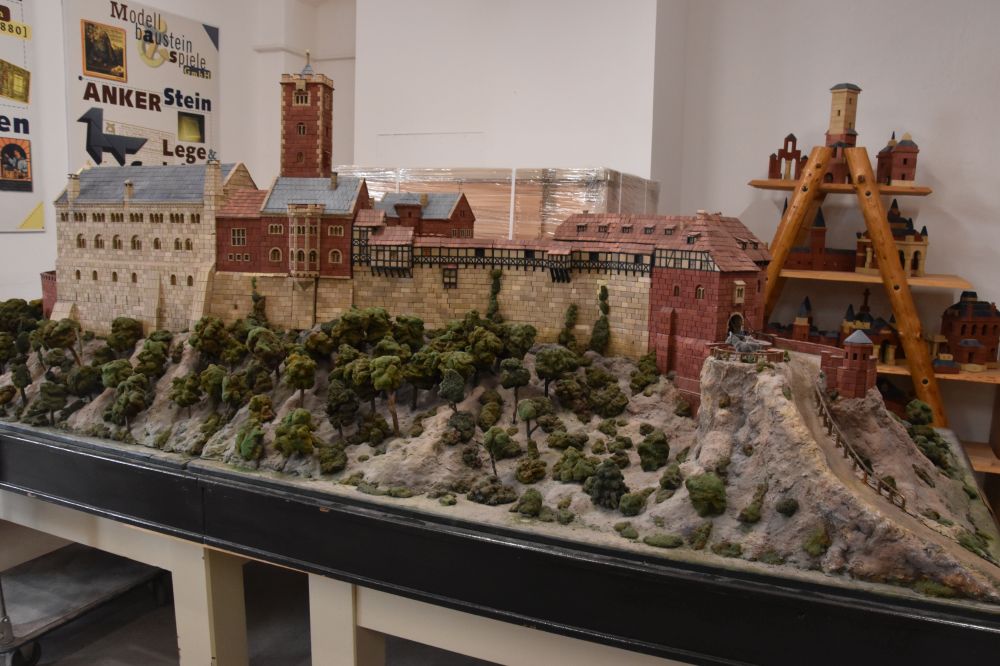



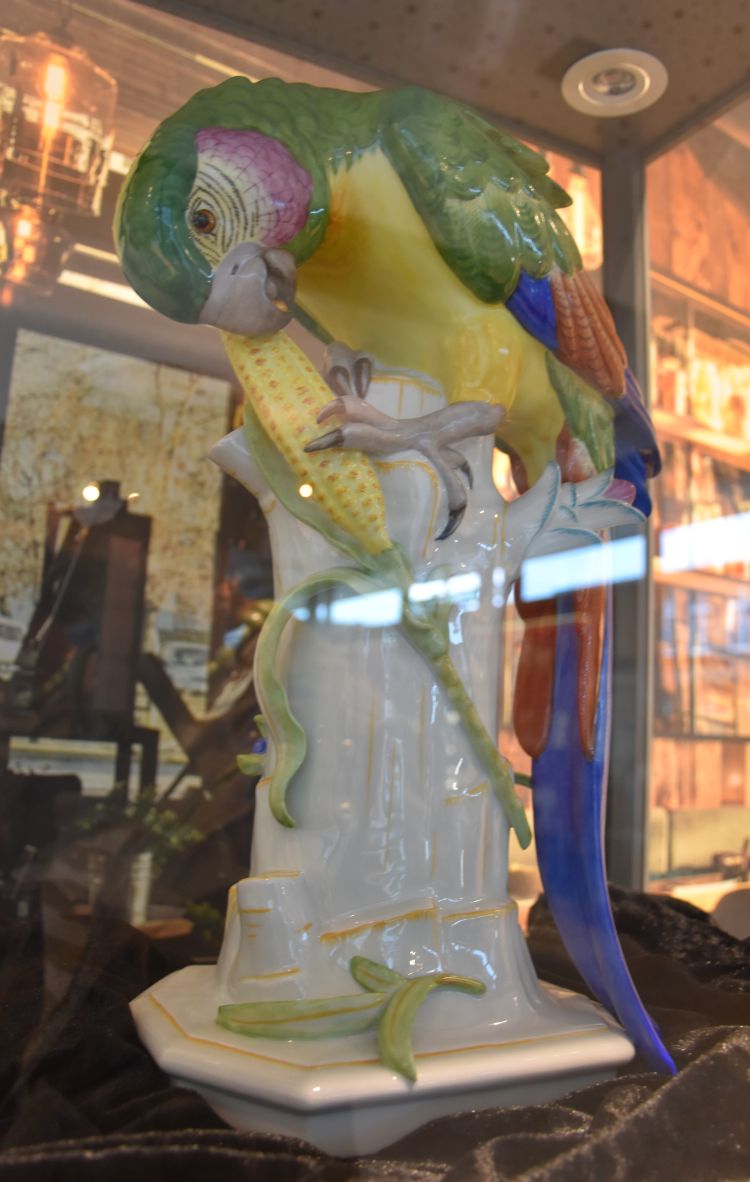
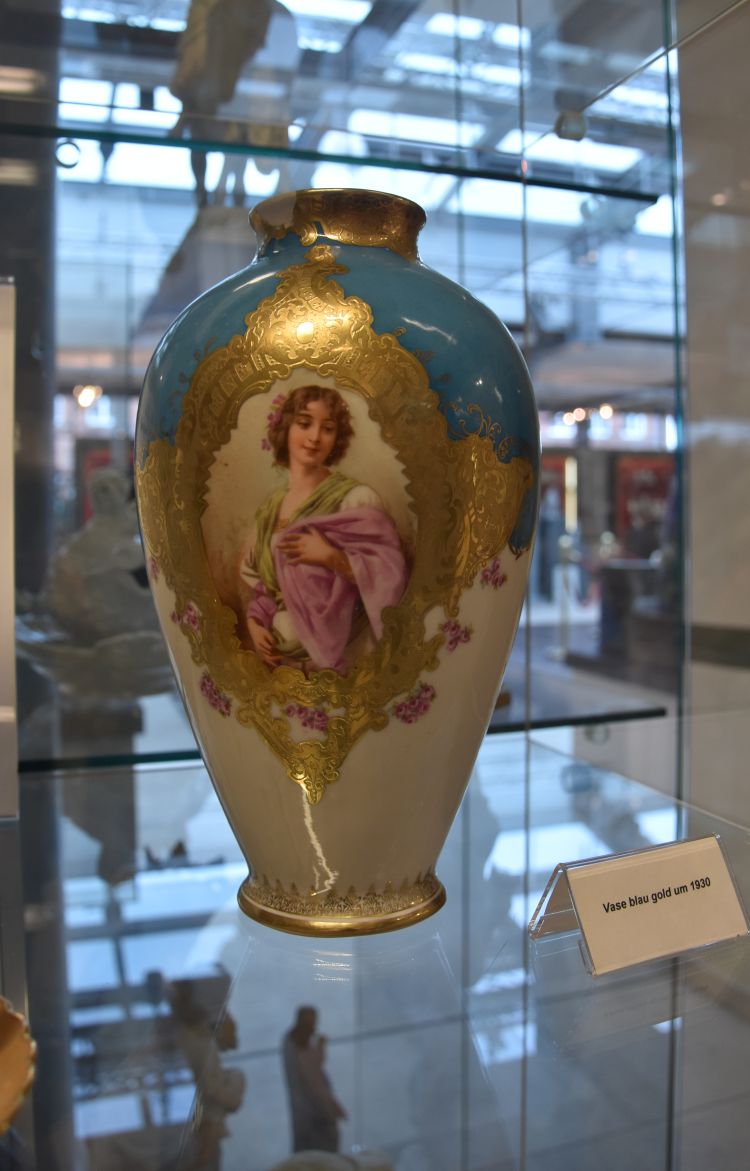

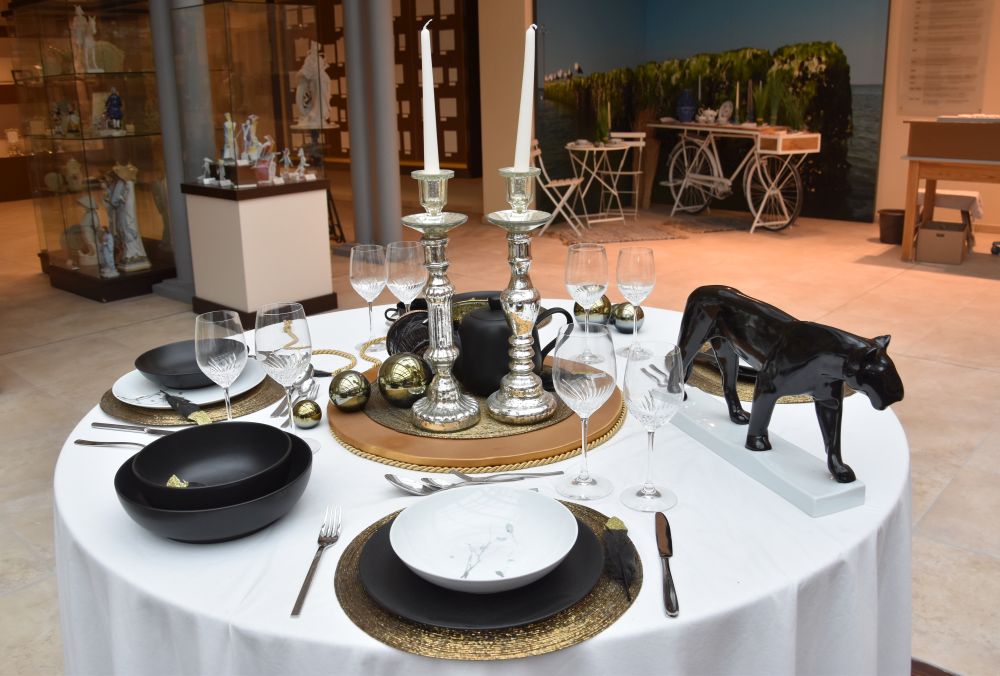
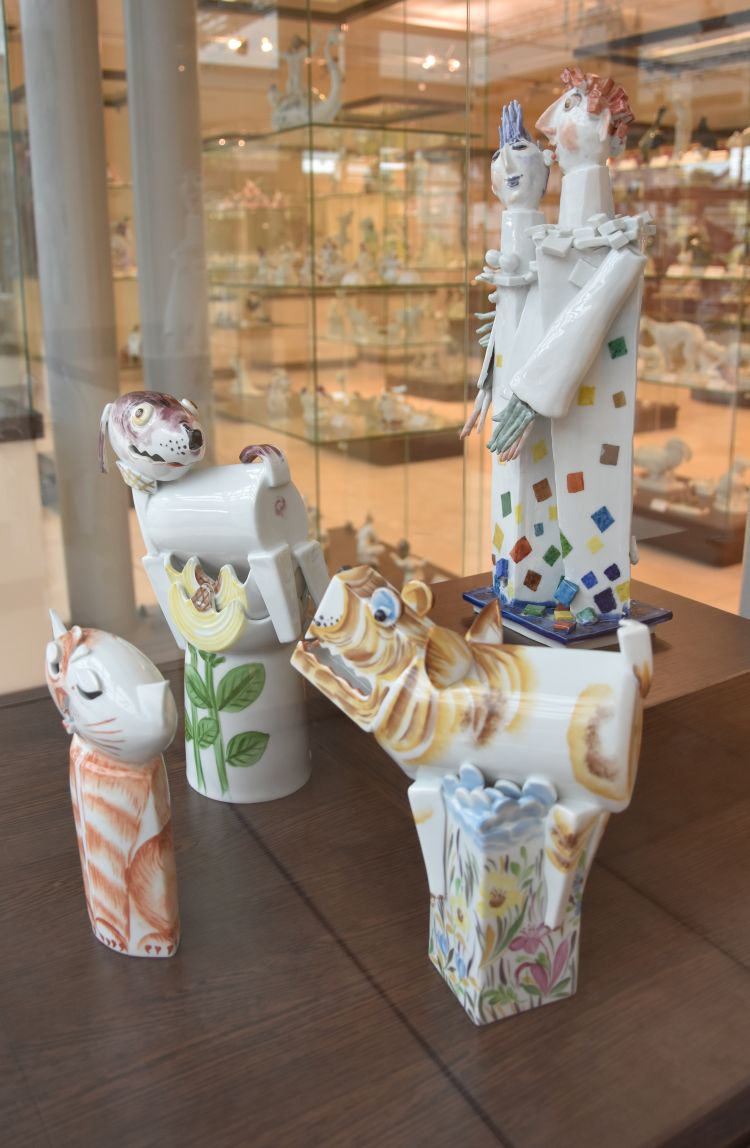
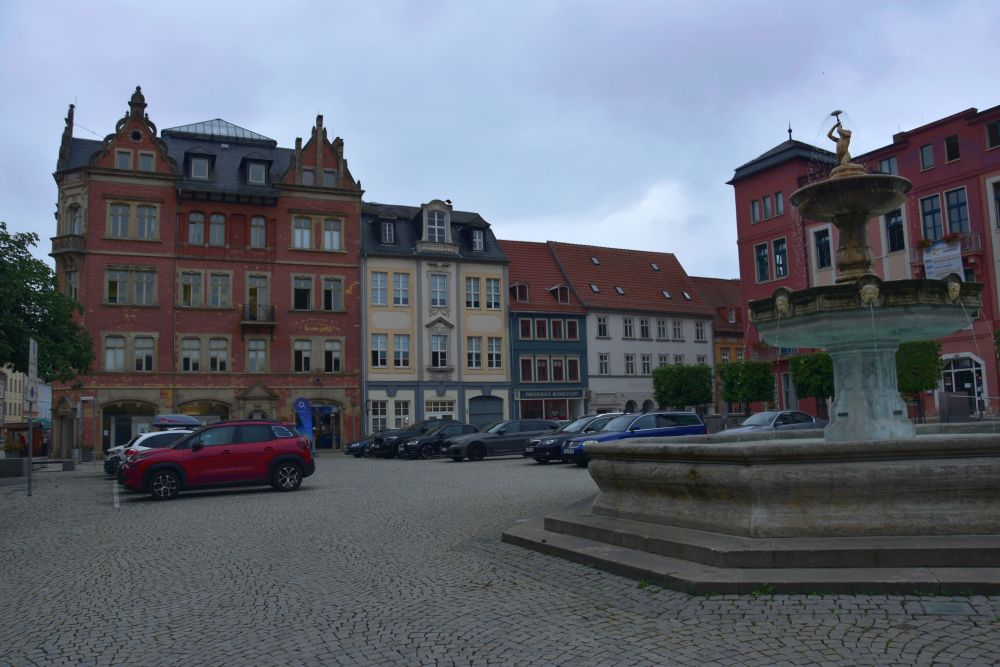
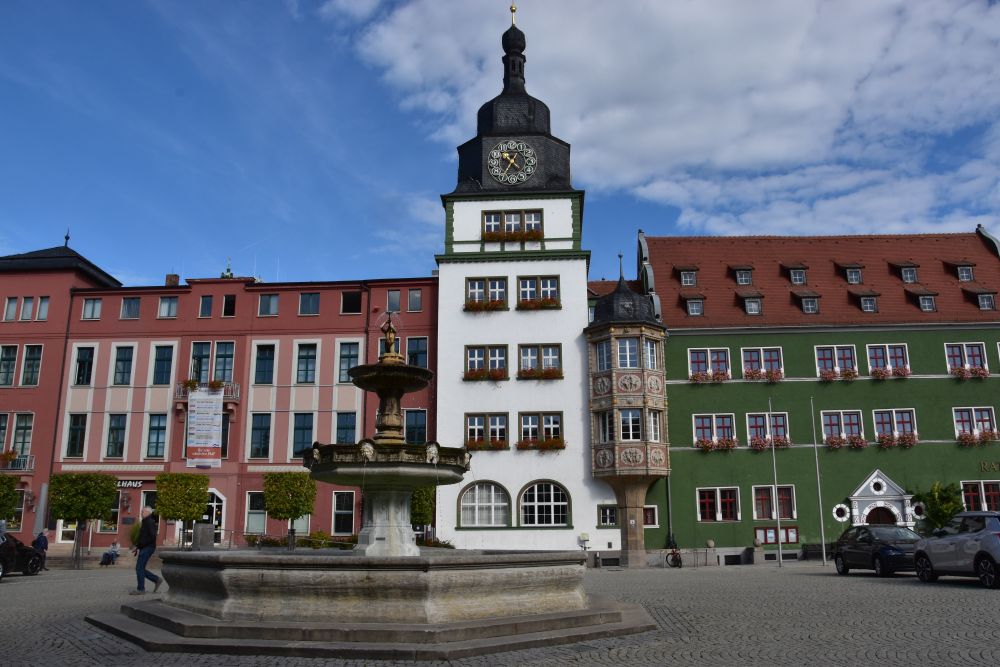
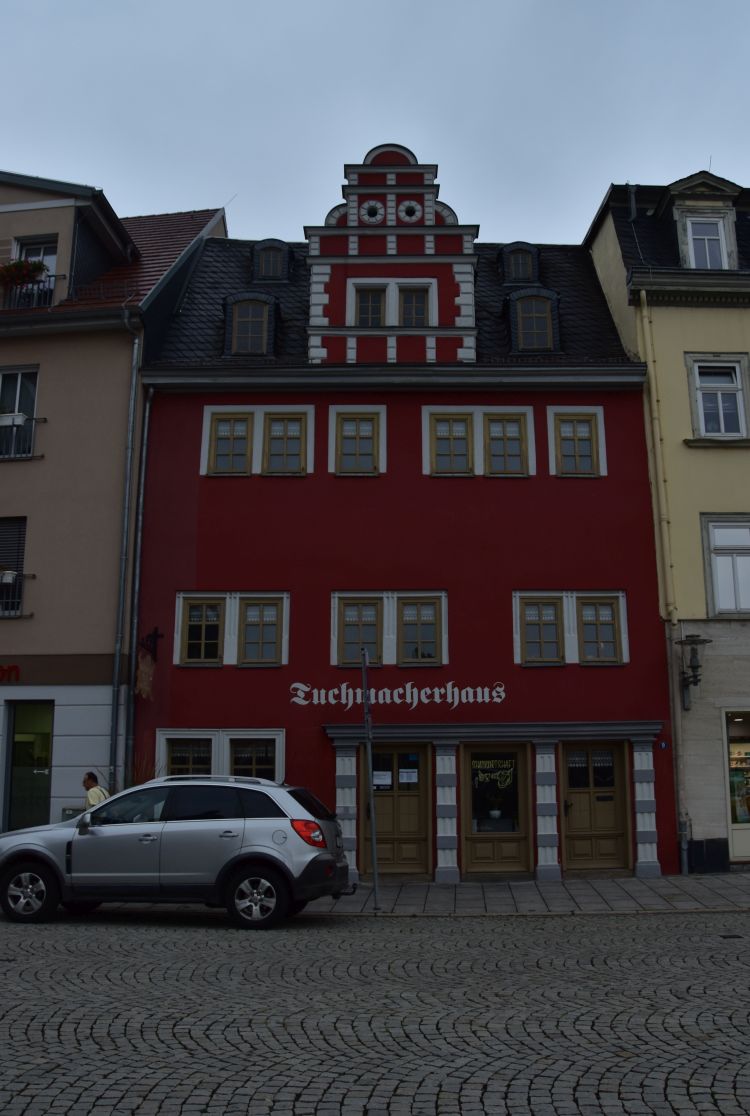
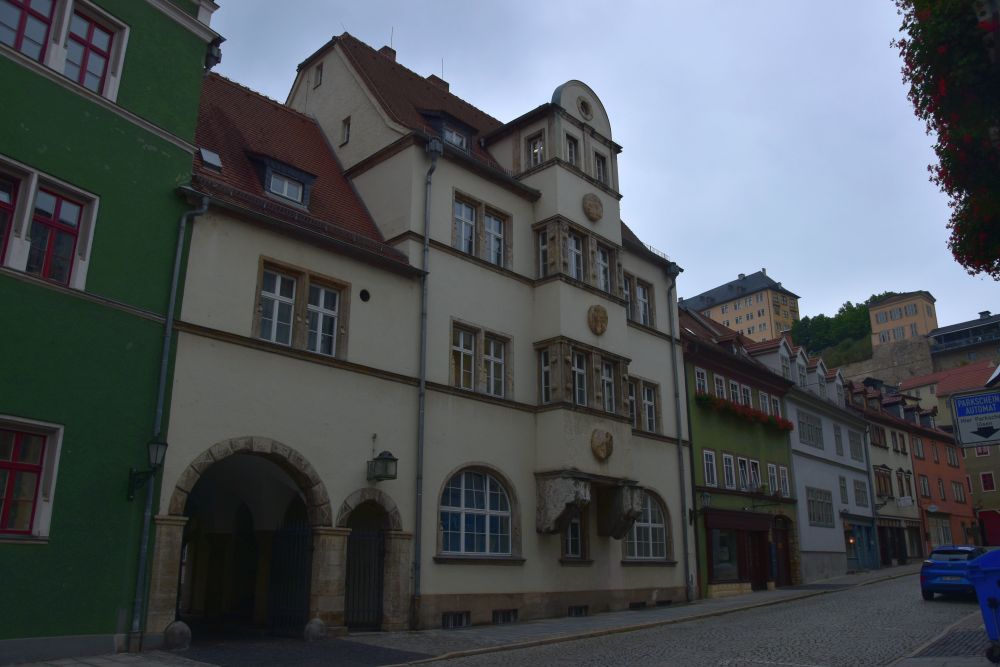
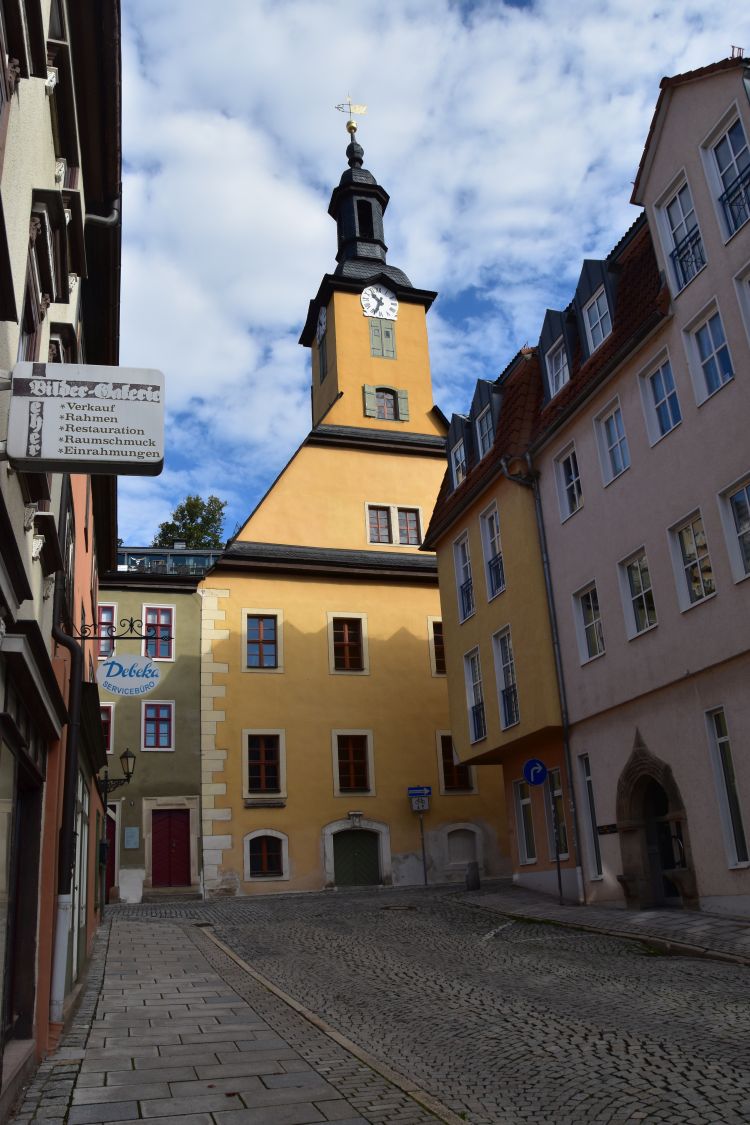
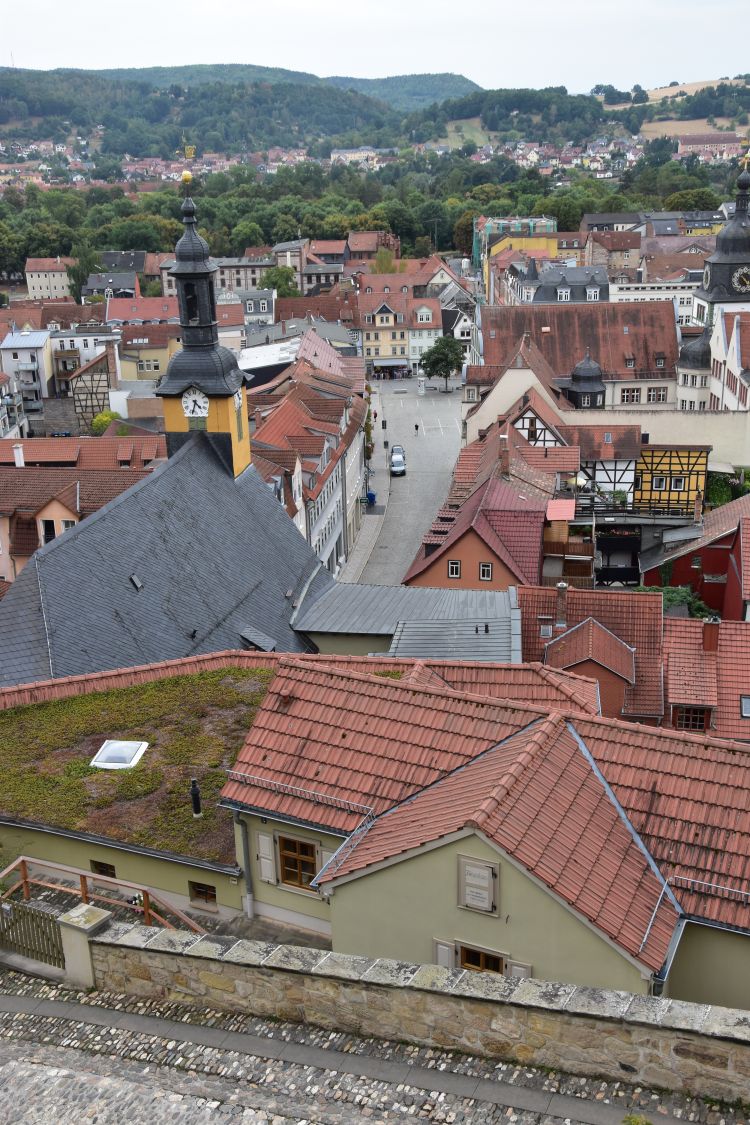
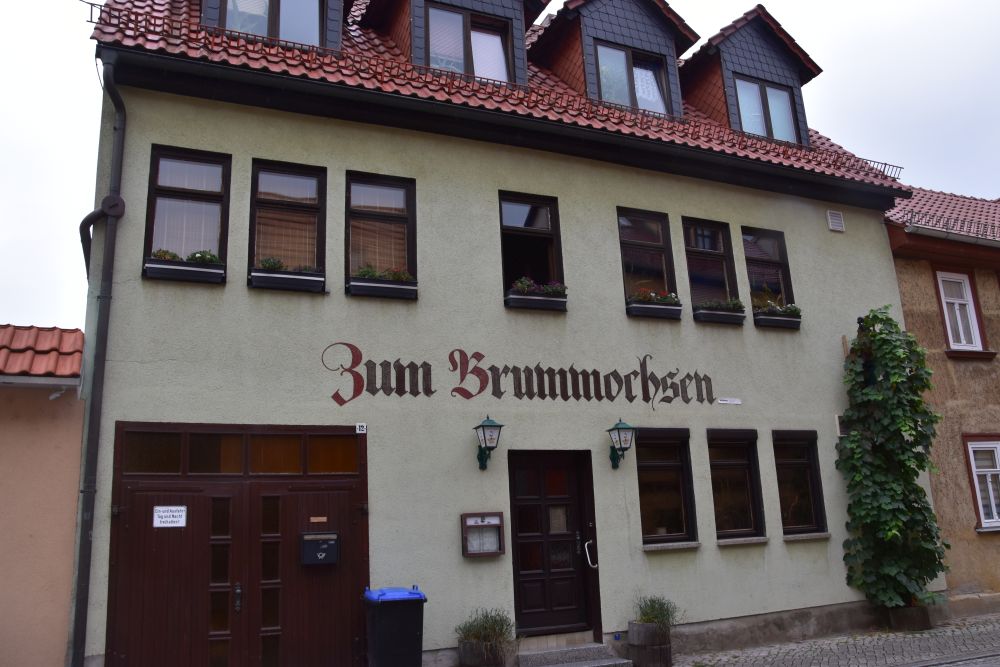
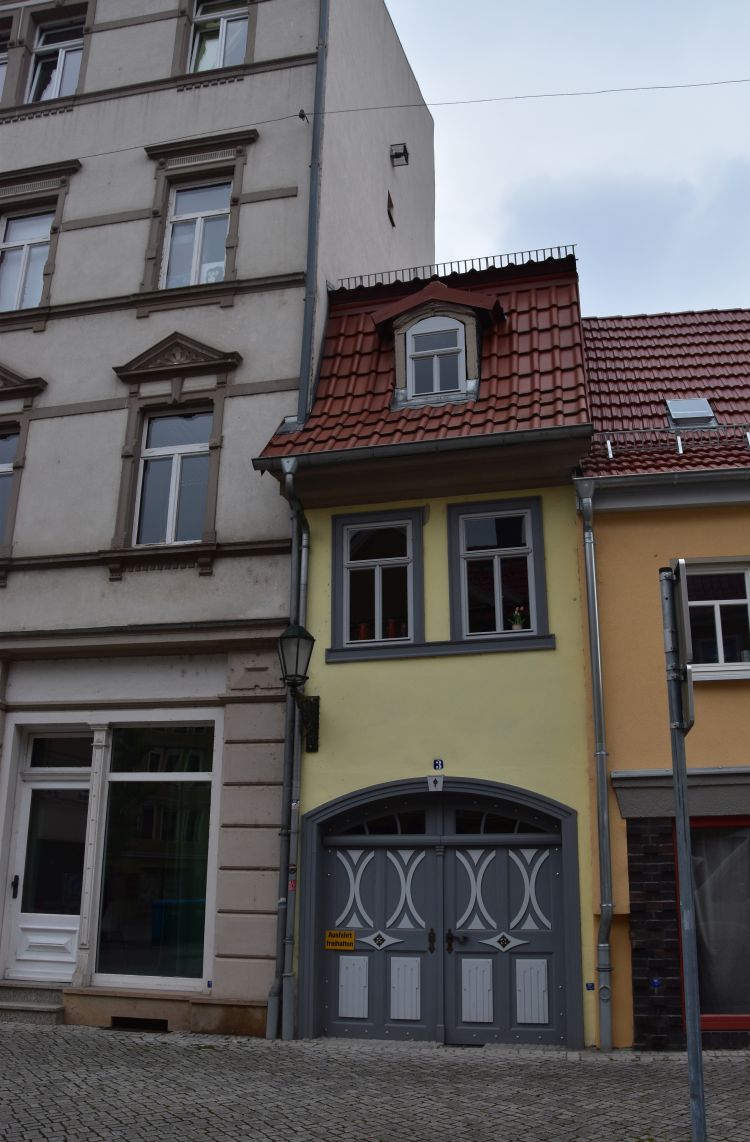
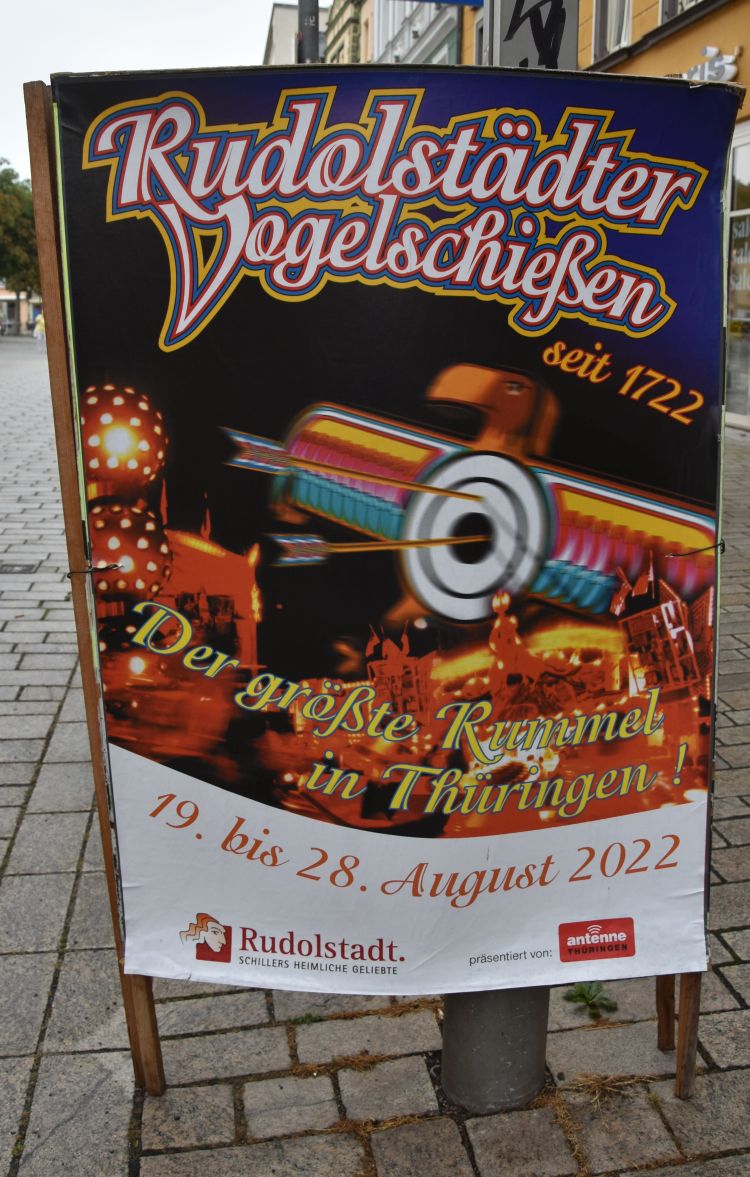
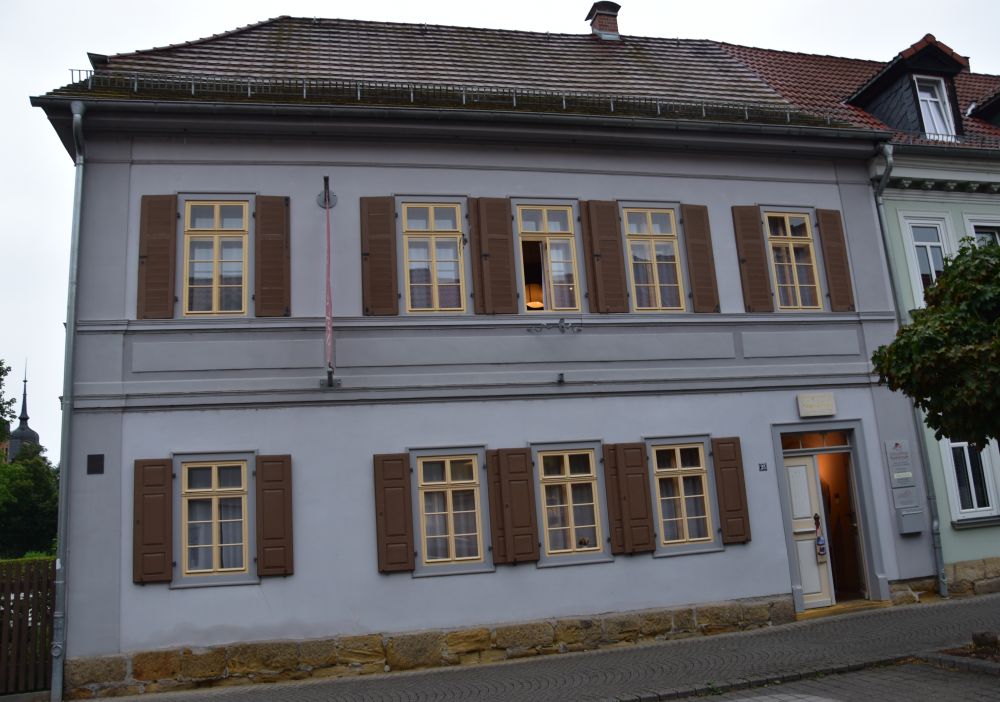
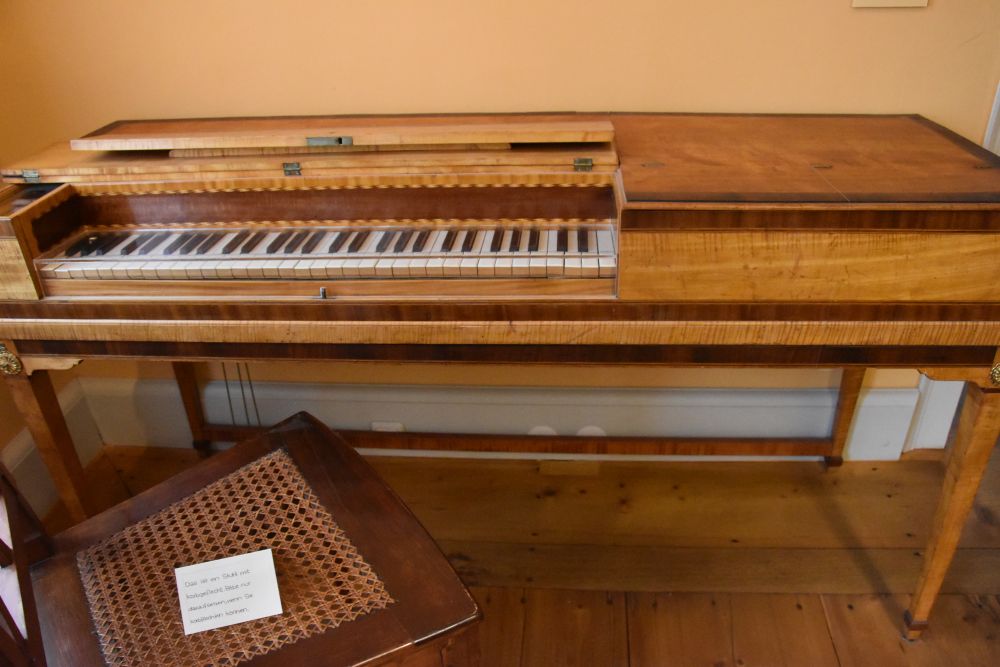

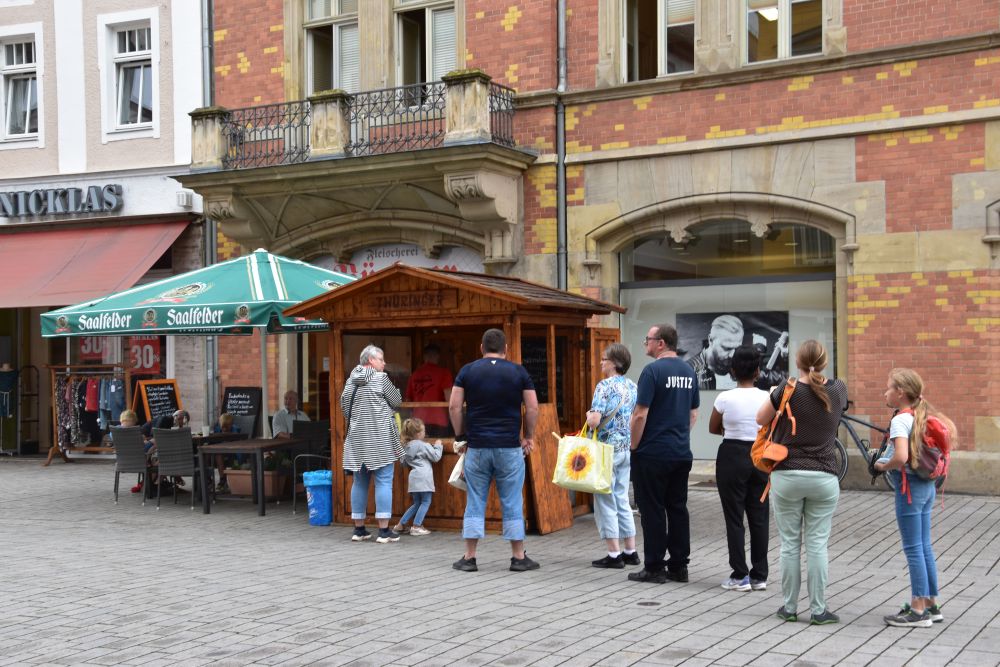
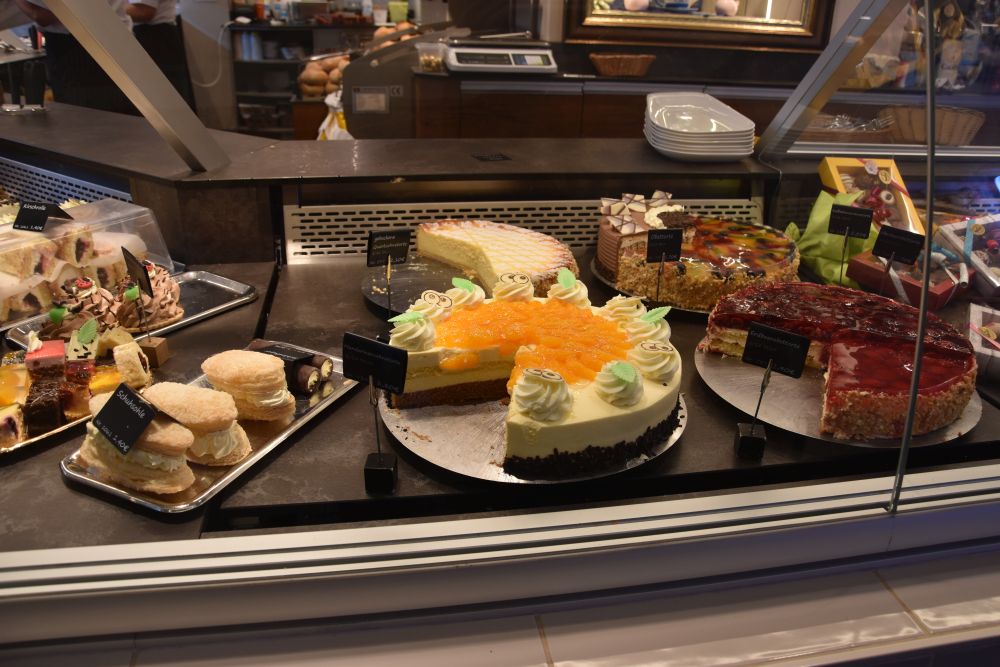

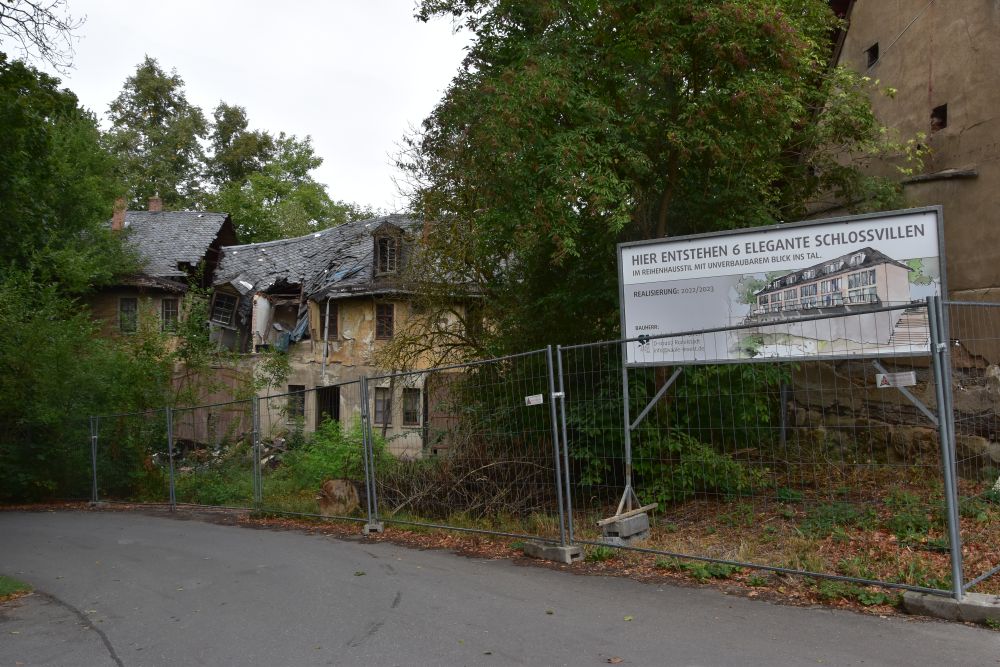

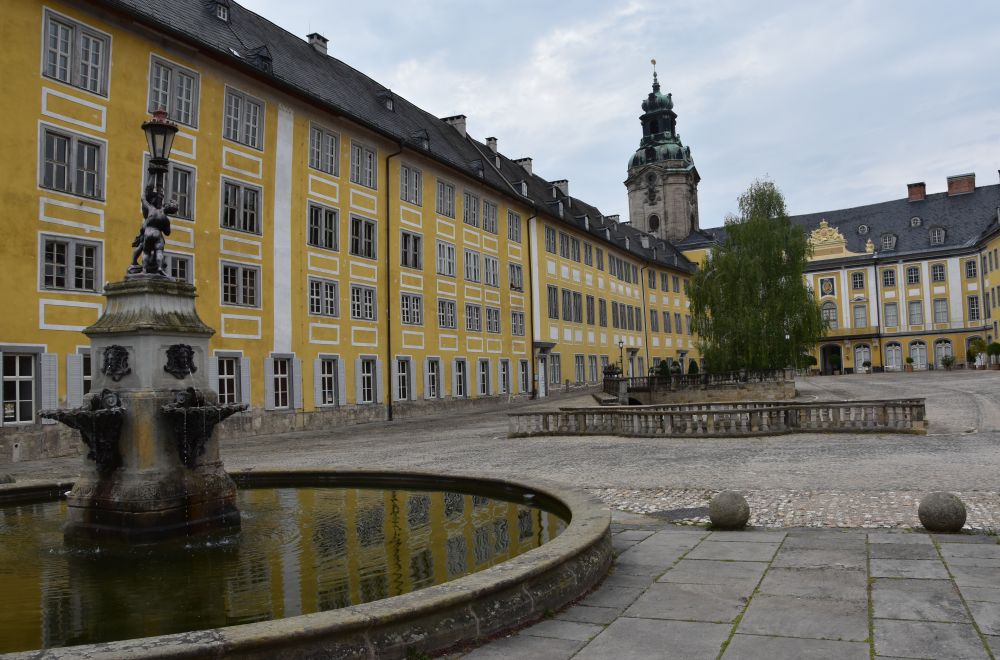

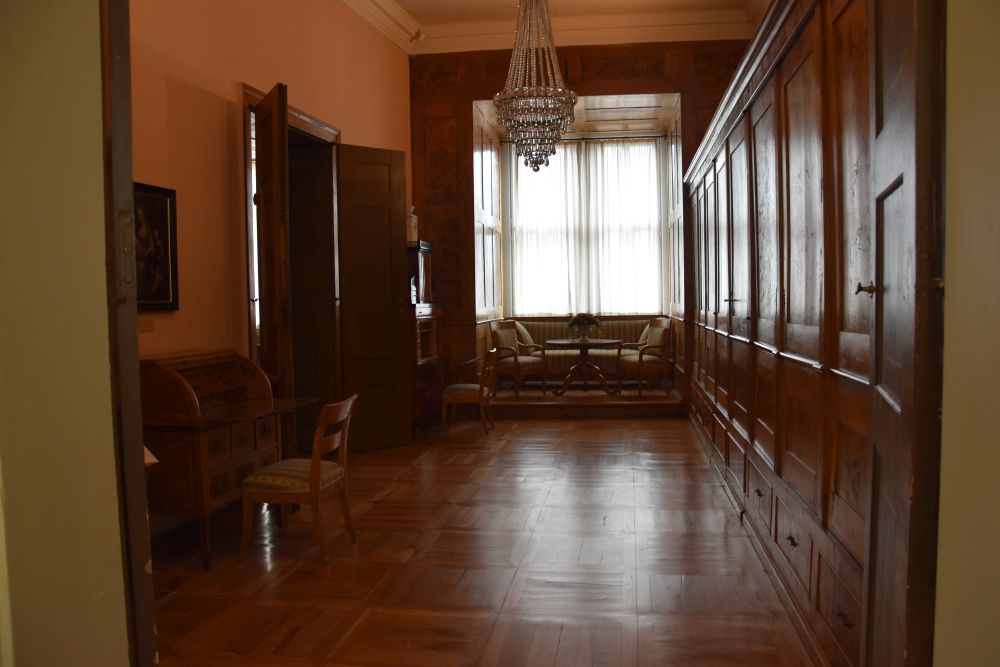

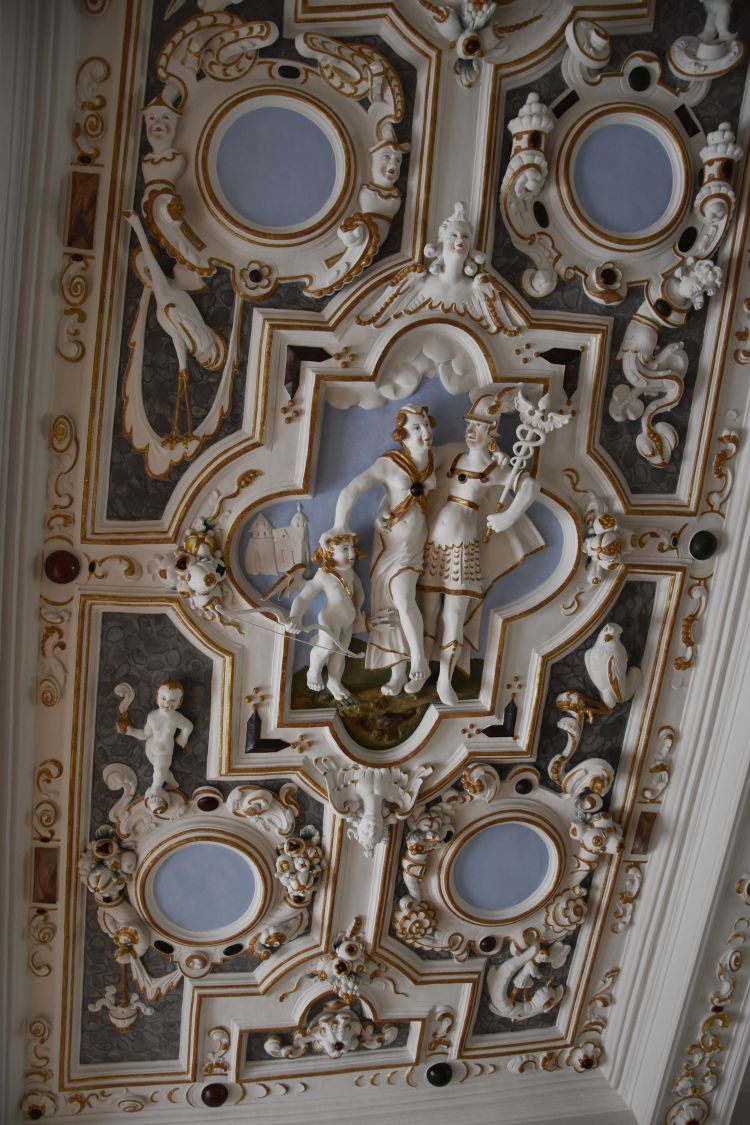

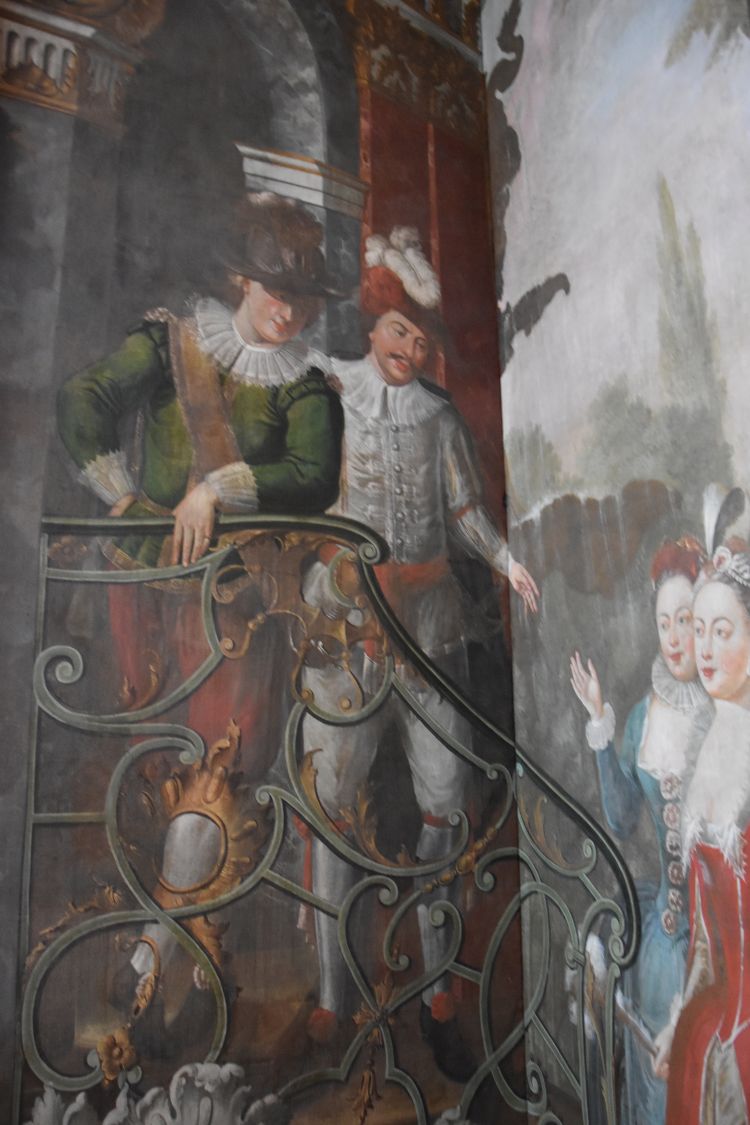
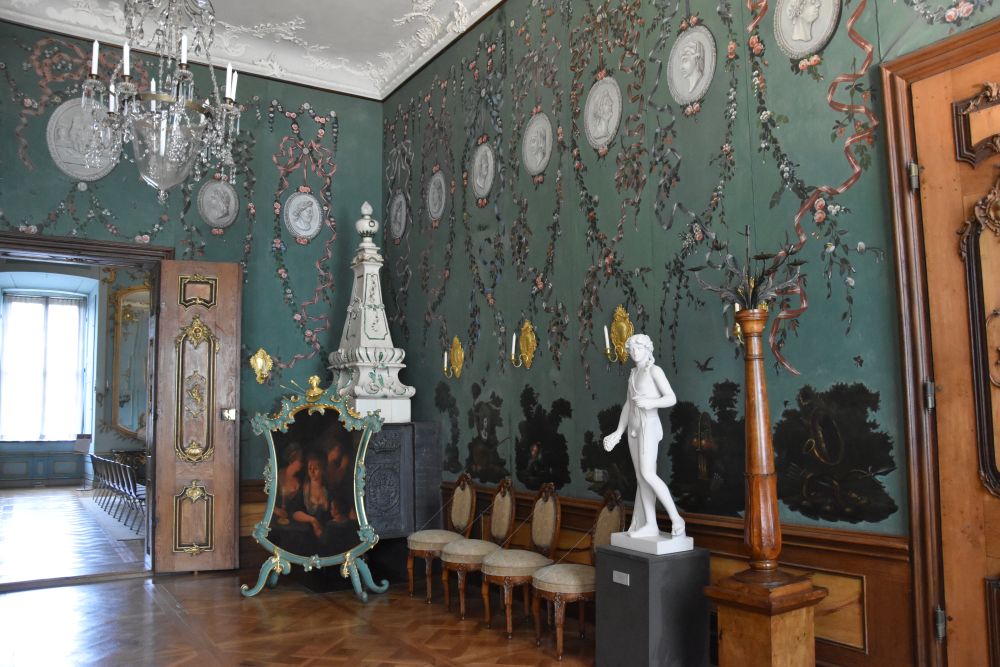
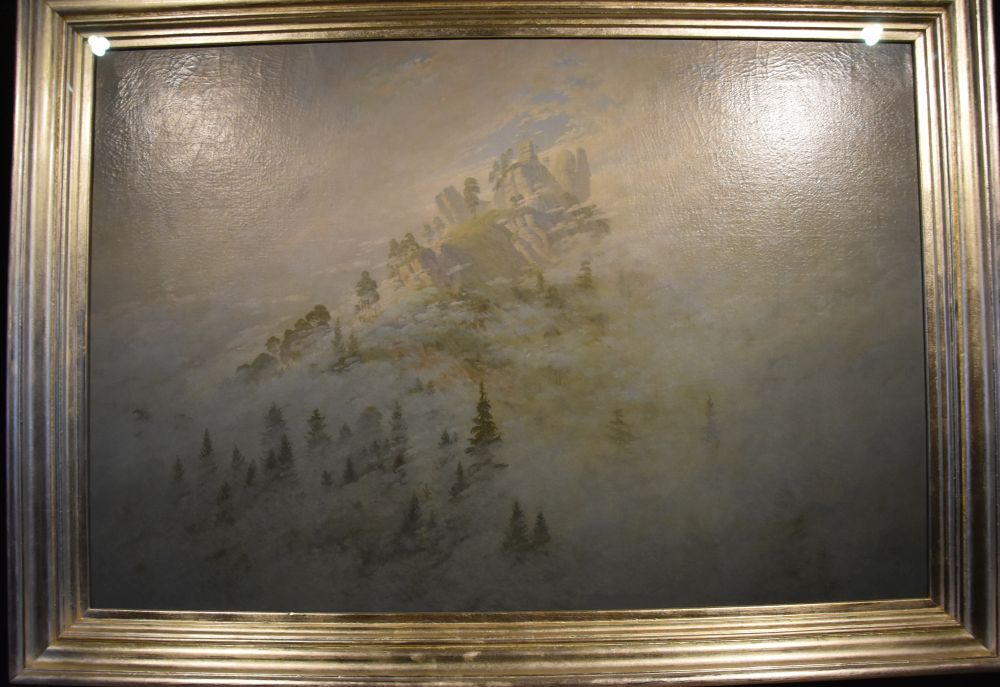
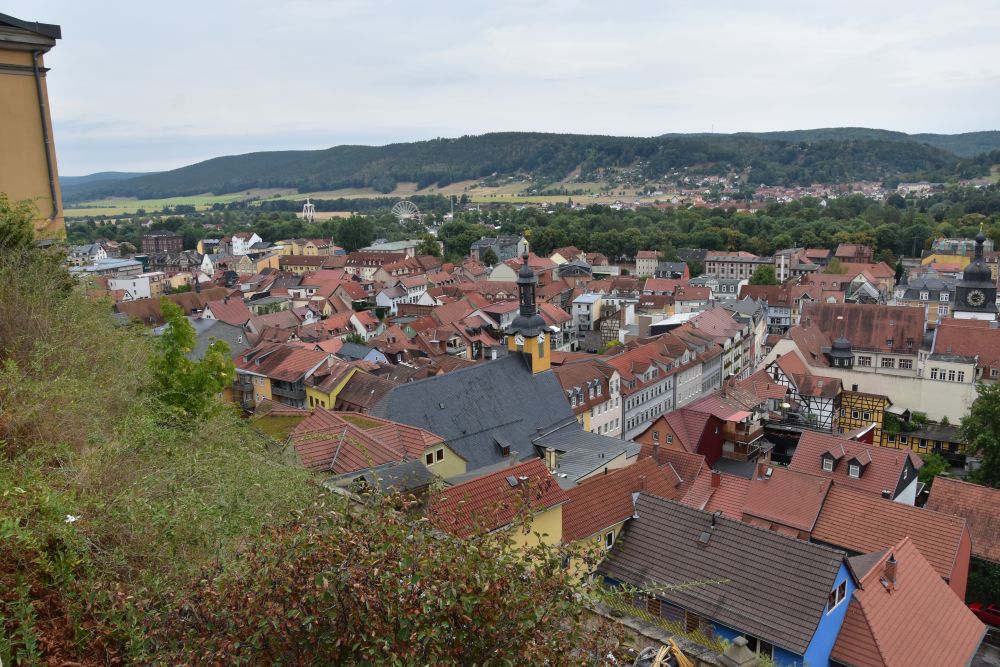
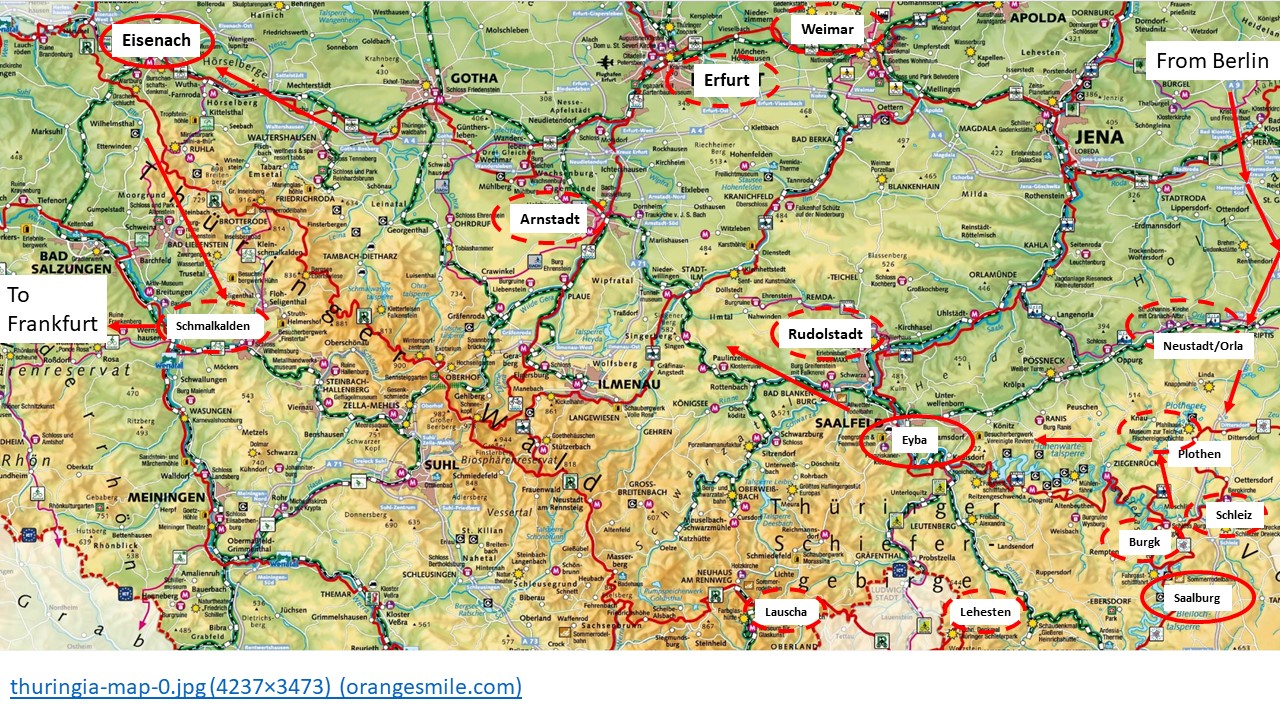
What a wonderful tour. Your photos are so clear and comprehensive that I feel that I have actually accompanied you in this charming town!
Thank you, I am happy to read that you joined me on my tour. Petra
[…] Schleiz, Plothener Teiche (ponds), along the dams of the upper Saale, Lehesten, Lauscha, Weimar, Rudolstadt, Erfurt, Arnstadt, Eisenach, Schmalkalden, Steinau an der Strasse, and the Odenwald with […]